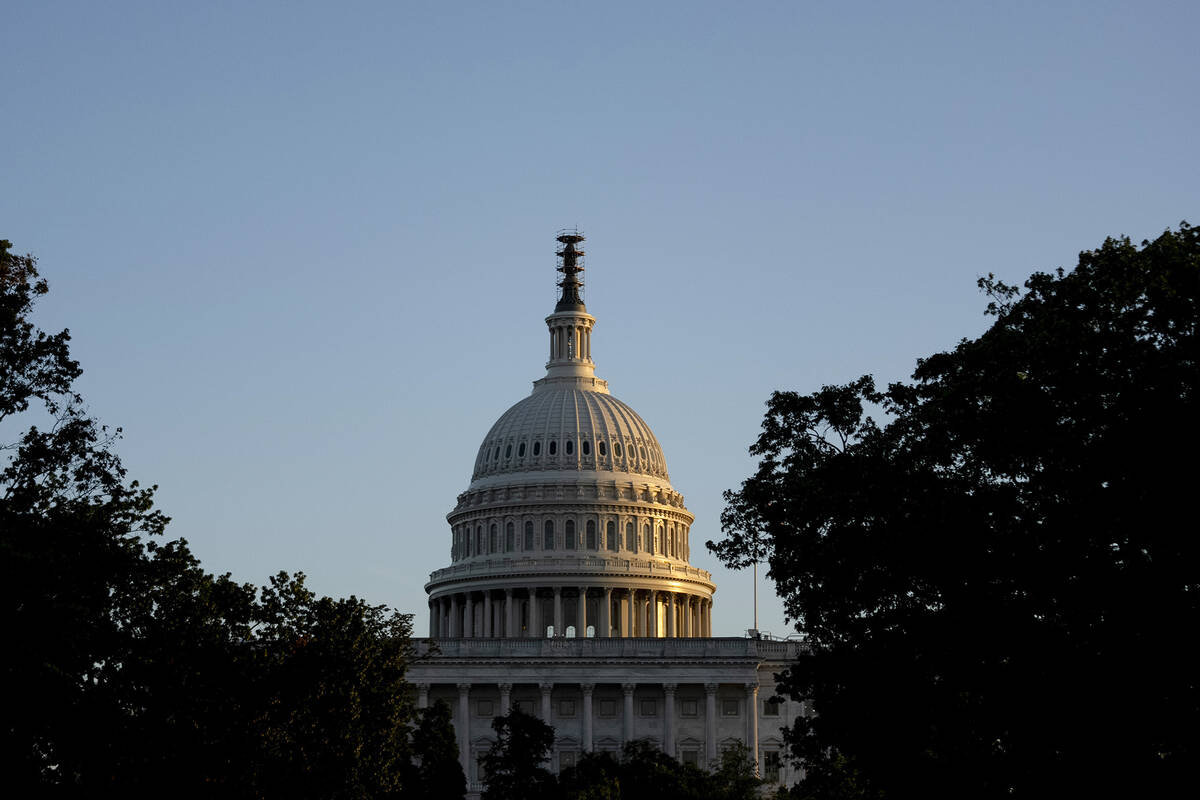COMMENTARY: A balanced budget amendment is in Democrats’ interests
A bipartisan commitment to responsible budgeting was once a fundamental part of American governance. Congress borrowed for exceptional situations and reduced the debt burden otherwise.
Since the Great Depression, members of both major political parties have collaborated on pursuing an amendment to the Constitution aimed at achieving a balanced budget. At the high-water mark of 1995, 72 House Democrats joined nearly all Republicans in approving a balanced budget amendment. Fully 95 percent of House Democrats voted for one or more of the six substitute amendments.
Today, many Democrats have written off such an amendment as a tool of sound governance. They should reconsider.
Federal debt threatens opportunity by driving up interest and inflation rates and by increasing uncertainty about federal tax and spending policies. As debt surges, so does the risk of a fiscal collapse.
When a crisis becomes obvious, it is too late to phase in changes. Congress would end up indiscriminately slashing important commitments as it contends with a blizzard of emergency demands backed by the administration’s vast expertise and communications capabilities.
Considered, gradual choices from Congress would be a better path. Members should embrace more bottom-up deliberation, expanded opportunities to advance mutual priorities through coalition building and enhanced practical democracy that only a legislature can deliver.
Well-designed balance rules can catalyze Congress to fix its broken budget processes, improve congressional culture and re-center itself as the primary federal policymaking body. What would they look like?
First, look at the U.S. states. Most have a combination of constitutional and statutory rules for budget balance. Some have one or the other, and only Vermont has none. Many have room to improve.
Second, look abroad. Today, the United States is a high-income outlier for lacking rule-based commitments to controlling the debt. Governments usually strengthen their budget institutions to recover from fiscal stress. U.S. states restored their creditworthiness with better rules and policies, especially in the 1840s and 1870s. Most European countries have done so in recent decades, especially Sweden and Switzerland.
Balance rules are a regular part of fiscal therapy, but their design matters enormously. The balanced budget amendment that the House passed in 1995, which failed in the Senate by a single vote, had significant flaws that many Democrats identified. It was neutral about how the budget should be balanced through whatever combination of spending and revenue changes that subsequent Congresses would adopt.
Neutrality is crucial to reach two-thirds’ support in both houses to propose an amendment to state legislatures. It is not sufficient.
The 1995 amendment would have required an annual balance. Tying spending — especially “outlays” — too closely to volatile revenue would cause significant policy instability.
Switzerland’s “debt brake” shows a better way — a somewhat vague constitutional commitment to balance over the medium term, paired with details in statute. The constitutional principles should remain applicable for centuries to come, and statutes can be adjusted to changing circumstances through the normal legislative process. The “structural balance” rules provide stable and predictable budgeting, allowing spending and revenue trends to move in tandem smoothly.
In Congress, newer, next-generation amendments sidestep the political and policy challenges of other versions. With well-crafted implementing legislation, they would balance over the medium term, adjust for changes in revenue, accommodate automatic stabilizers for recessions, include a reasonable safety valve for emergencies, and establish a decade-long glide path to primary balance, which excludes interest.
The most important question remains. Considering that appropriations account for one-fourth of spending, how can Congress adjust the budget and economic growth dials to make reaching and staying in balance possible?
Much of the answer is a comprehensive congressional budget. All spending and revenue is managed by the committees of jurisdiction in the holistic context of a single budget bill. This would do the most to strengthen Congress, make it a far better place to serve, foster bipartisan solutions for America’s challenges, and, almost incidentally, advance more responsible budgeting.
Without a course correction, Congress will be unable, at least on its own terms, to spare the American people from too-high inflation and interest rates, limited opportunities and perhaps even a debt crisis. Adopting well-designed balance rules and related upgrades, on the other hand, can not only prevent bad outcomes but also make Congress a much greater force for good — and a much more rewarding workplace for those who are called to serve.
Kurt Couchman is a senior fellow in fiscal policy at Americans for Prosperity and author of “Fiscal Democracy in America: How a Balanced Budget Amendment Can Restore Sound Governance.” He wrote this for InsideSources.com.

















